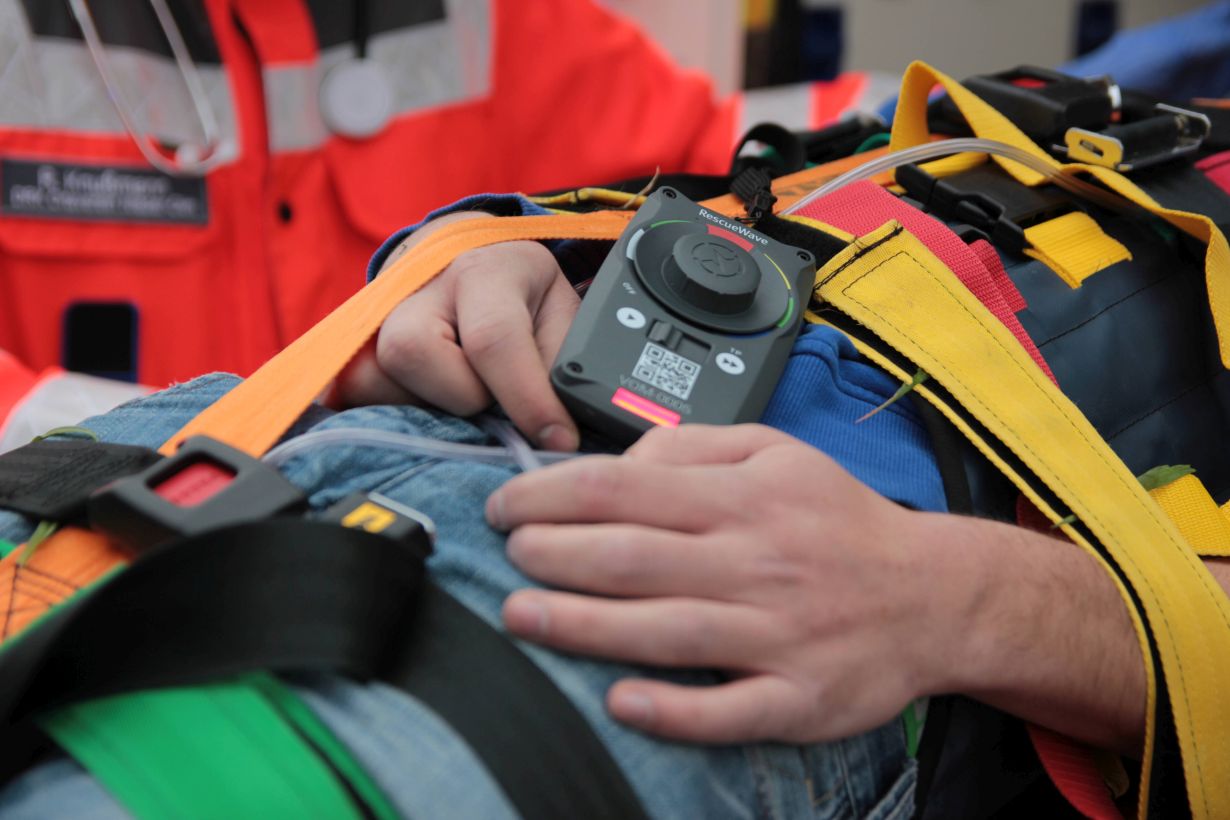Presently, the order according to which people involved in a so-called mass-casualty incident are provided with first aid and transported to hospitals is being determined by a procedure initially used in military medicine. Colored slingcards indicate the priority of a medical emergency. A new electronic system, called RescueWave, now is to enhance efficiency of operations. The idea also comes from Karlsruhe Institute of Technology (KIT).
The Eschede accident in 1998, the worst train disaster in the history of the Federal Republic of Germany, killed 101 people and 88 were heavily insured. Professor Wilhelm Stork of KIT’s Institute for Information Processing Technology (ITIV) and Director of the FZI Research Center for Information Technology still remembers watching a TV documentation some years later: “About 3000 rescuers with nearly 250 vehicles were involved, but the situation was rather chaotic.”
The Head of the Microsystem Technology Group of ITIV then initiated a project within the KIT Research Training Group on Sensor Networks. The then doctoral student Ashok Kumar Chandrasekaran was a member of the group and helped develop of a solution to bring order into this chaos: The software-based system RescueWave. Research at KIT and advanced studies at KIT’s FZI Research Center for Information Technology were carried out in cooperation with VOMATEC Innovations GmbH and antwortING Beratende Ingenieure PartGmbB. The company ITK Engineering coordinated the system’s further development to maturity.

The RescueWave electronic sensor system is to replace slingcards for casualties (foreground). (Photo: FZI Research Center for Information Technology)
The result is RescueWave: Instead of cards, the emergency physician distributes electronic sensor devices, by means of which casualties can be localized automatically and patient information can be acquired and transmitted to the headquarter in real time. With the help of data from radio-networked devices and a software specially developed for emergency operations, the headquarter, even under most chaotic conditions, can coordinate vehicles and rescue forces on site and send them to the casualties as required. Through networking, also hospitals, control centers, and crisis teams can be connected. The information gathered is available to the task forces and emergency management staff anytime. Cards, tally sheets, clip boards, and notebooks are no longer required. Misunderstandings are prevented. Decisions can be made more quickly and on the basis of reliable data.

The men behind RescueWave (from left to right): Dr. Ashok Kumar Chandrasekaran, Professor Wilhelm Stork, and Dr. Stefan Heuer (Photo: FZI Research Center for Information Technology)
It took more than ten years for the idea to be implemented. This was mainly due to the complexity of the problem, says Dr. Stephan Heuer, who coordinated system implementation at ITK Engineering and worked as a scientist at FZI. “Technical systems for rescue services always are highly complex. In a situation of maximum stress, rescue forces must fully concentrate on their emergency care task proper. An assistance system must not ask the user to make unnecessary decisions. It must be clear and robust and intuitive operation must be guaranteed. The RescueWave devices, for instance, are designed for temperatures between -20 and +50°C and are splash-proof.”
The system has already passed a first practical test by emergency response units in the district of Germersheim, Rhineland-Palatinate. Wilhelm Stork is confident that the system will prevail on the market. “At the RETTmobil 2017 trade show, this concept turned out to be an absolute hit. Several German cities and districts have already expressed their interest.”
Being “The Research University in the Helmholtz Association”, KIT creates and imparts knowledge for the society and the environment. It is the objective to make significant contributions to the global challenges in the fields of energy, mobility, and information. For this, about 10,000 employees cooperate in a broad range of disciplines in natural sciences, engineering sciences, economics, and the humanities and social sciences. KIT prepares its 22,800 students for responsible tasks in society, industry, and science by offering research-based study programs. Innovation efforts at KIT build a bridge between important scientific findings and their application for the benefit of society, economic prosperity, and the preservation of our natural basis of life. KIT is one of the German universities of excellence.

